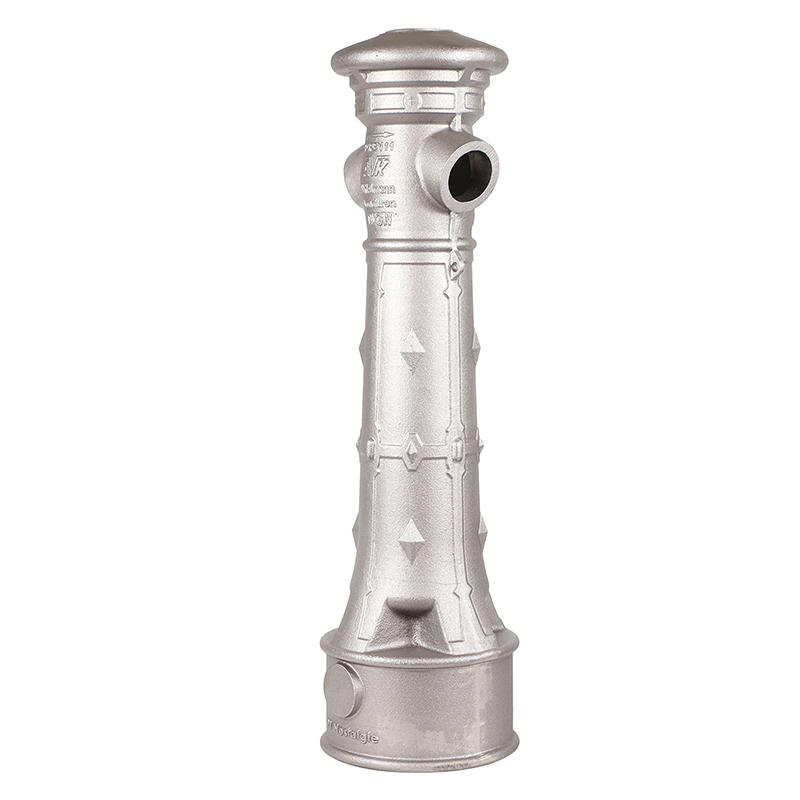The Real-World Guide to Choosing a ductile iron cover
If you spend any time around municipal crews or utility yards, you quickly learn one thing: a good ductile iron cover quietly saves money. It survives traffic, weather, and, frankly, the occasional poor installation. I’ve toured foundries where they also cast hydrant bodies and valves—same metallurgy discipline—so the DNA carries over. One such shop in Shijiazhuang (Gelan Building, No.256 Xisanzhuang Street, Hebei, China) is Mingda Metals, known for ductile iron hydrant bodies and, increasingly, covers and frames. Different products, same core competency.

Industry snapshot (and what people actually buy)
Two big trends: 1) cities standardize on EN 124-2 load classes (A15–F900), and 2) coatings have moved from simple primer to ED-coating or epoxy powder for longer corrosion resistance. Also, anti-rock seating and anti-theft locking are not “nice-to-haves” anymore on arterial roads. Many customers say D400 covers with EPDM gaskets cut rattle and rainwater ingress noticeably—small detail, big win.
Materials, process, and testing (the short version)
The best-performing ductile iron cover typically uses SG iron such as EN-GJS-500-7 (ASTM A536 65-45-12). Casting routes vary: green sand, resin sand, and yes, even lost wax for tight-tolerance components. One foundry I visited runs cold and hot core boxes depending on geometry. After shakeout and fettling, the parts are shot-blasted, then coated—primer, powder coating, or ED-coating. It sounds routine, but the difference shows up in salt-spray results and how the paint holds up on curb lanes in winter.
Testing? Load per EN 124-2 (e.g., D400 = 400 kN test load), mechanical properties per ISO 1083/ASTM A536, coating durability via ASTM B117 salt spray. Some buyers quietly request magnetic particle or dye penetrant checks on critical interfaces. It’s not overkill—just pragmatic.
Product specifications (typical, real-world may vary)
| Material | Ductile iron EN-GJS-500-7 (≈ASTM A536 65-45-12) |
| Load classes | EN 124-2 A15 / B125 / C250 / D400 / E600 / F900 |
| Size range | Clear openings ≈ Ø450–Ø1000 mm (custom on request) |
| Casting methods | Sand casting, resin sand; cold/hot core; lost-wax for small parts |
| Weight | ≈0.2–200 kg depending on class and frame style |
| Coatings | Shot/sand blasting + primer, powder coating, ED-coating, passivation |
| Seating | Anti-rock design with optional EPDM gasket |
| Service life | ≈30–50 years (site conditions matter) |
Where they’re used (and why)
- Municipal roads and highways (D400/E600)
- Ports, airports, logistics yards (E600/F900 high-impact)
- Industrial plants, refineries, water utilities
- Telecom, fiber, and drainage chambers in urban zones
Advantages? High strength-to-weight, crack resistance vs gray iron, good vibration damping, and, with modern coatings, better corrosion performance than many expect. Surprisingly robust in freeze–thaw cycles too.
Vendor comparison (field-notes style)
| Vendor | Casting & Coating | Certs | MOQ / Lead Time | Customization |
|---|---|---|---|---|
| Mingda Metals (Shijiazhuang, Hebei) | Sand/resin; ED/powder/primer; shot-blast | ISO 9001; EN 124-2 testing | ≈50 sets / 20–35 days | Logos, patterns, load class, locking, gaskets |
| OEM Foundry A | Resin sand; primer or epoxy | ISO 9001 | ≥200 sets / 45–60 days | Limited embossing, standard frames |
| Import Trader B | Varies by supplier | Claims EN 124-2 | Stock-dependent | Minimal; catalog only |
Customization, QA, and data points
Common requests: city crest embossing, anti-slip chequer patterns, hinged lids, bolt locking, gasketed seating, even embedded RFID. QA-wise, look for heat-number traceability, dimensional checks, load test certificates, and coating thickness logs (≈80–200 μm for powder/ED). In one D400 batch I saw, salt-spray ran past 480 hours before edge creep—respectable for roadside use.
Case notes and user feedback
A coastal logistics yard swapped aging C250 lids for E600 gaskets with ED-coating; after 18 months, zero rocking complaints and noticeably lower rust bleed near joints. A city water utility told me, “We spec D400 with locking in busy corridors—less theft, fewer callbacks.” To be honest, it’s the boring reliability you want.
One more thing
If a supplier can cast a hydrant body cleanly, they can usually deliver a solid ductile iron cover. The core skills—metallurgy, molding, heat control, finishing—are the same. That’s why I pay attention to shops like Mingda Metals that publish their processes: sand casting with cold/hot cores, resin sand, even lost wax for tighter parts, plus shot-blasting and modern coatings. It shows.
Citations
- EN 124-2: Gully tops and manhole tops for vehicular and pedestrian areas — Part 2: Gully tops and manhole tops made of cast iron.
- ASTM A536: Standard Specification for Ductile Iron Castings.
- ISO 1083: Spheroidal graphite cast irons — Classification.
- ASTM B117: Standard Practice for Operating Salt Spray (Fog) Apparatus.
- ISO 9001: Quality management systems — Requirements.
Hebei Mingda International Trading Company is a trading company which is specialized in castings, ODM Ductile Iron Manhole Cover forgings and machinery parts.Our products include all kinds of raw castings to be made of ductile iron , grey iron , brass , stainless steel and aluminums, machined castings and forged parts .ODM Ductile Iron Covers To make these parts according to the customers’Custom Iron Casting drawings , we have relative suitable production craft and equipments, such as resin sand , sand mould , hot core boxes , lost-wax , lost –foam and so on Iron Casting Manufacturer Custom.Specially for hydrant bodies and valves’Ductile Iron Manhole Cover Manufacturer bodies, we have collected rich experience for these products in the past 16 year’s actual production, Now we are proud of our products with good surface and high quality material. Iron Casting ManufacturerWhatever,we have been trying our best to provide our customers with better quality castings by improving production crafts and more careful quality control.Cast Iron Castings Manufacturer|super blog